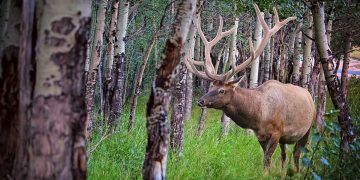
Elk are large, majestic animals that live in the wild. Pennsylvania offers some of the best elk hunting opportunities in the United States, and hunters can take advantage of several different seasons and methods. Elk live in forested areas near streams or springs where they can find food and water throughout most of the year.
Pennsylvania offers some of the finest hunting in the United States.
Pennsylvania offers some of the finest hunting in the United States. The state has over 6 million acres of public lands, including state game lands, state forests, and state parks. Pennsylvania’s diverse landscape includes mountains and valleys; rivers and lakes; hardwood forests and grasslands.
The variety of wildlife species found throughout Pennsylvania make it an excellent location for hunters to pursue their favorite quarry. Whitetail deer are plentiful throughout much of the eastern part of the state with good populations also found further west near Pittsburgh or along Lake Erie’s shoreline near Cleveland Ohio. Black bear can be found throughout central PA as well as parts of northern PA where there is enough food available during springtime when they emerge from hibernation (typically March 15th). Wild turkey can be hunted year-round but peak season runs through late April through early June before nesting season begins..
Whitetail deer are the most widespread deer species in Pennsylvania.
Whitetail deer are the most widespread deer species in Pennsylvania. They can be found in all 67 counties, and they have a few more options when it comes to hunting seasons than their elk counterparts do.
The Pennsylvania Game Commission has designated nine counties as elk-hunting zones where elk may be hunted during certain months between September 1 and December 31 each year. In those areas, hunters must purchase an additional permit before they can legally hunt these animals with bows or guns (in addition to their regular deer hunting licenses). Elk season opens earlier than whitetail season does–September 1 compared with October 15–and runs longer too: until December 31 instead of November 30 or December 1 depending on where you live within one of those nine designated areas.
Deer hunters aren’t limited by such strict regulations; instead they enjoy an extensive array of opportunities across all 67 counties during various times throughout both fall and winter months thanks largely due increased interest over time since first being introduced back in 1987!
Elk hunting opportunities vary throughout the state due to the variation in habitat types across Pennsylvania’s varied topography.
Elk hunting opportunities vary throughout the state due to the variation in habitat types across Pennsylvania’s varied topography. Elk are found in the Allegheny, Appalachian and Pocono Mountains, but not in the Poconos or Allegheny Mountains.
The best time for elk hunting is from mid-October through December because this is when bulls are most active. During this time, you may be able to see them bugling (they make loud noises when they’re looking for cows). If you hear one bugle close by, watch for others as well because there could be several bulls nearby trying to attract cows with their calls!
A variety of wildlife-related recreation is available in Pennsylvania’s public lands.
The Pennsylvania Game Commission (PGC) is responsible for managing the state’s wildlife resources and public lands. The PLC manages more than 1 million acres of land in its system, which includes state parks, game lands and forests.
The PLC also operates a number of wildlife management areas (WMAs) throughout the state that are open to hunting and other recreational activities such as hiking, boating and camping. Many WMAs also have fishing opportunities available on lakes or ponds within their boundaries.
Hunting is a big part of Pennsylvania history and heritage, but it is also more than just a sport.
Hunting is a big part of Pennsylvania history and heritage, but it is also more than just a sport. Hunting has been an important part of many people’s lives throughout our state’s history. For Native Americans, hunting was essential to survival; they needed food to eat and materials for clothing and tools. Early settlers needed to hunt as well because they had no easy access to grocery stores or restaurants where they could buy food easily (or at all). Today, many Pennsylvanians continue hunting because they enjoy the challenge of tracking down game animals while enjoying nature in its purest form–without any distractions from technology!
Elk hunters who want a challenge will find it here
As a big game animal, elk are not easy to hunt. In fact, they’re quite difficult to find and even more challenging to take down. Elk hunting in Pennsylvania is a challenge that only the most dedicated hunters will be able to conquer–but if you’re up for it, we have plenty of public land available for your enjoyment!
Elk hunting has been an important part of our state’s history and heritage since before Europeans arrived here in America (they were actually introduced by settlers). Elk have been hunted extensively throughout Pennsylvania over time because they provide high-quality meat which can be eaten fresh or preserved for later use–and many people still enjoy eating venison today!
Bottom Line
If you are looking for a challenge, then Pennsylvania is the place to go. The state offers some of the best elk hunting opportunities in the country and has plenty of other species to choose from as well. If you want something different than deer or bear hunting, then elk might be just what you need!




